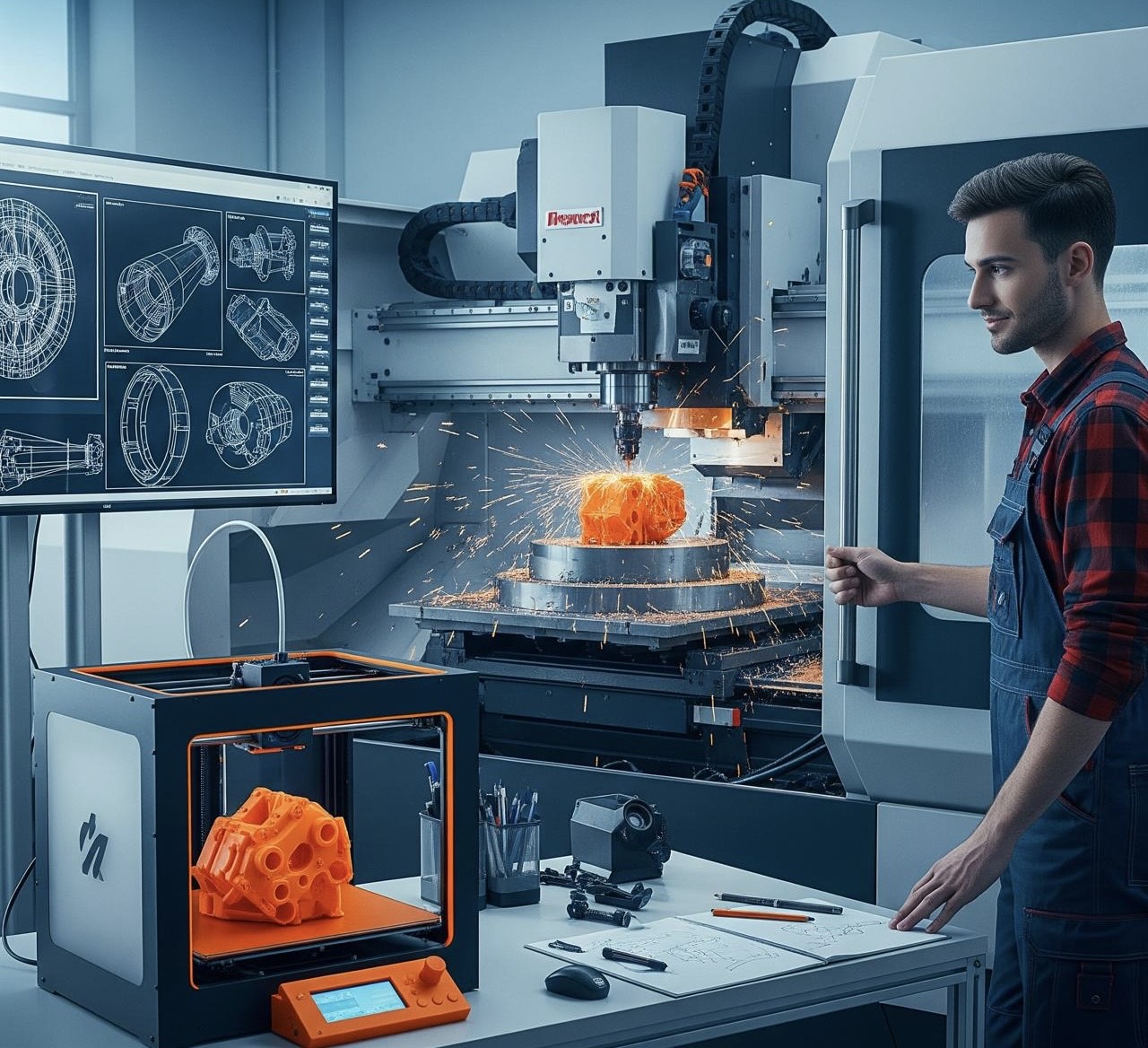
Additive vs Substractive Manufacturing
Two Paths to One Creation
By: Destiny Dickerson
Additive vs. Subtractive Manufacturing: Two Paths to One Creation
In today’s fast-paced world of design and production, two primary techniques stand out in how we bring ideas to life: additive manufacturing and subtractive manufacturing. While they both aim to create physical products, their methods couldn’t be more different. Understanding how each process works isn’t just valuable for engineers—it’s becoming essential knowledge for entrepreneurs, innovators, and creators across every industry.
Understanding Additive Manufacturing
Additive manufacturing, often referred to as 3D printing, is all about building from the ground up. Instead of starting with a block of material and carving it down, this method constructs an object layer by layer based on a digital model. Materials like plastic, metal, resin, or even biological compounds are added precisely and incrementally until the final shape takes form.
What makes additive manufacturing so appealing is its ability to bring complex, custom ideas to life with minimal waste. For example, companies creating custom shoe insoles can scan a person’s foot and print a design that fits them exactly. Similarly, aerospace designers can print intricate, lightweight components that reduce overall aircraft weight without compromising durability.
Medical professionals have also embraced this technology. Surgeons can now practice on printed models of organs before an operation, making procedures safer and more predictable. From dental implants to hearing aids, the ability to personalize products quickly and cost-effectively has revolutionized the delivery of healthcare solutions.
Exploring Subtractive Manufacturing
Subtractive manufacturing takes a more traditional approach. It starts with a solid block of material—whether that’s metal, plastic, or wood—and carefully removes material through cutting, drilling, or milling until the desired shape is achieved. Machines such as lathes or CNC systems perform these precise cuts.
One classic example of this technique is the manufacturing of car engine parts. A gear, for instance, might begin as a thick steel rod that gets shaped down using a CNC machine until it becomes the exact size and structure needed. The final product is not only strong but also made to withstand high stress and wear over time.
Another example lies in jet engine production. Turbine blades are often milled from solid titanium to ensure they can endure extreme heat and pressure. While subtractive processes typically require more raw materials and generate more waste, they excel in terms of strength and accuracy for specific applications.
Choosing the Right Approach
Each method shines in different settings. Additive manufacturing is ideal for rapid prototyping, creating innovative designs, and producing customized parts. It allows designers to test and tweak ideas quickly without the heavy upfront investment in molds or tooling. This has made it incredibly useful in industries like fashion, architecture, and biotechnology.
Subtractive manufacturing, on the other hand, remains the preferred method for producing exact, durable parts at scale. It’s the go-to for industries where consistency, strength, and mass production are top priorities, such as aerospace, automotive, and industrial manufacturing.
Interestingly, many companies are now blending the two. In hybrid manufacturing systems, a product might be printed using additive methods and then fine-tuned using subtractive machines. This combination offers the flexibility of 3D printing with the precision of traditional machining.
Looking Toward the Future
As tools and technologies continue to advance, the lines between these two methods are becoming increasingly blurred. What once seemed like competing approaches are now often used together to push the limits of innovation. For designers and manufacturers alike, knowing how and when to use each method unlocks endless possibilities.
Whether you’re creating a single prototype in a home studio or producing thousands of components in a global factory, mastering the strengths of additive and subtractive manufacturing will help you build smarter, faster, and better than ever before.
Sources:
- NASA.gov. (2023). “NASA’s Use of Additive Manufacturing in Space Exploration.” Retrieved from https://www.nasa.gov
- Mayo Clinic. (2022). “3D Printing in Healthcare.” Retrieved from https://www.mayoclinic.org
- Autodesk. (2021). “Additive vs. Subtractive Manufacturing: What’s the Difference?” Retrieved from https://www.autodesk.com
- MIT OpenCourseWare. (2023). “Introduction to Manufacturing Processes.” Retrieved from https://ocw.mit.edu